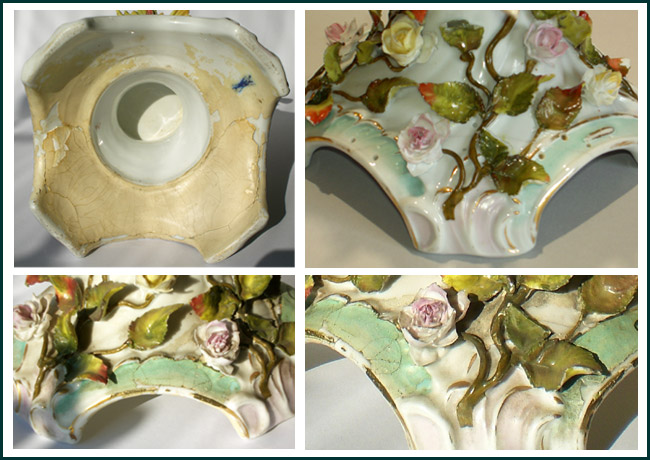Conservation
Conservation may be described as preventing an object from deteriorating further or, at least, slowing down this process. With ceramics this means cleaning, and perhaps, removing old bonding materials or retouched surfaces. Where appropriate’ this is followed by consolidating (stabilising) break edges, cracks and fragile surfaces before bonding broken pieces with ethically approved materials. It may also involve adding replacement parts for missing areas, but all of these interventions should be visible to the naked eye.
Restoration
Restoration involves all of the above, but more attention will be given to the aesthetics of the piece. Thus, parts missing from the original object will be finished to look very much like the surrounding area. Surfaces will be tinted and textured to a very close match of the original; decorations and patterns will look very similar and gilding will be carried out where necessary. Ideally, however, all of these treatments should be applied only to in-filled areas and not spill over onto the original ceramic.
Invisible Repairs
Invisible repairs are achieved by covering up restored areas, usually with multiple layers of fillers and paint. This can sometimes be achieved by hand, but more commonly involves spraying on several layers by air brush and often results in over-spraying of substantial areas of the original surface.
The right treatment
A thorough understanding of history, construction, function, use and value (cultural, personal or financial) of an object will determine the most appropriate approach, both in terms of materials and methods. I can advise you on the most suitable options after close examination of the real object or with good digital images as references.

